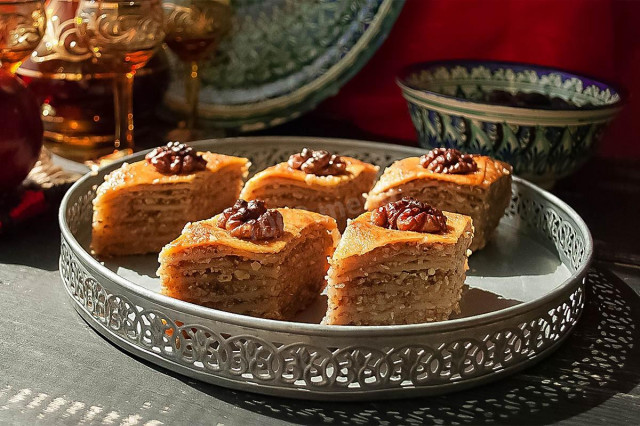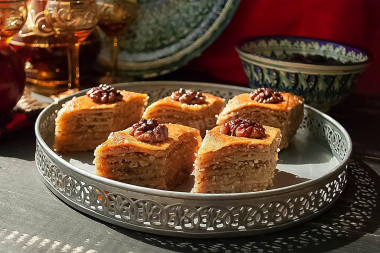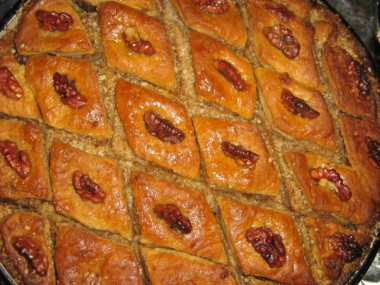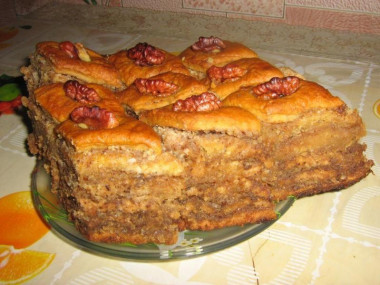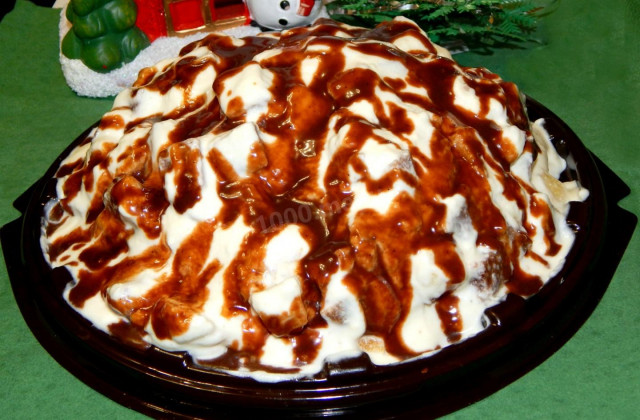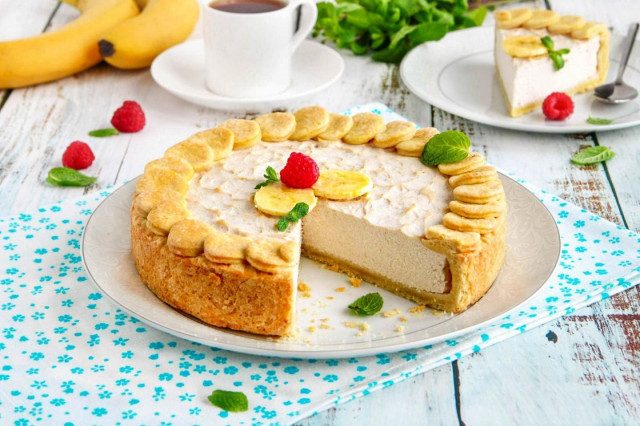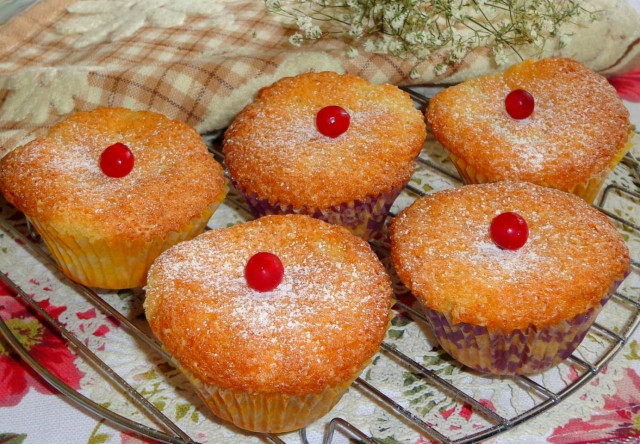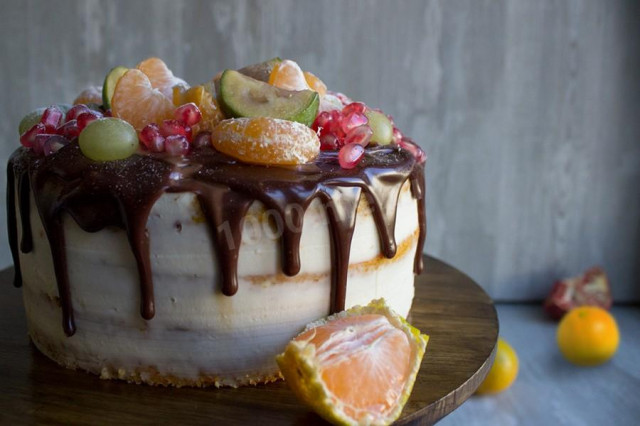Composition / ingredients
Step-by-step cooking
Step 1:
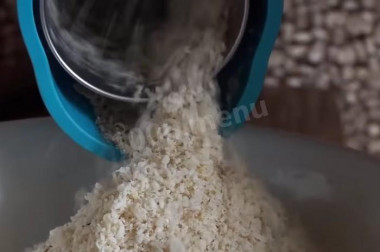
How to make Azerbaijani baklava? First of all, prepare the products for the filling. In total, 400 grams of walnuts (kernels) will be needed for baklava. Select whole halves and quarters for decoration, and chop the rest. In the photo, a special grater for nuts (it works on the principle of a meat grinder and grinds nuts without squeezing oil out of them). If you don't have one, then scroll through the nuts in a meat grinder or in a chopper.
Step 2:
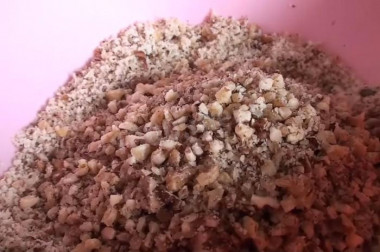
Chop a small part of the nuts into large crumbs. Mix all the nuts for the filling together.
Step 3:
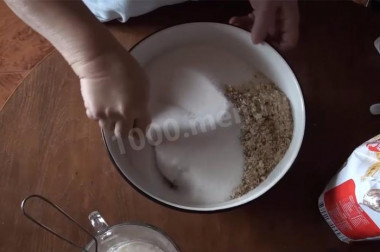
Add sugar to the nuts and mix. For the filling, also melt the butter in any convenient way and let it cool.
Step 4:

Put a pinch of saffron in a warm teapot.
Step 5:

Pour hot water and let it brew.
Step 6:
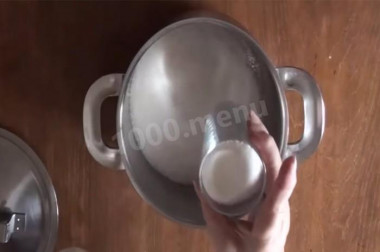
Cook the syrup (in the homeland it is called sorbet). How to make syrup? Pour sugar into a saucepan and pour water for the syrup. Put on the fire, bring the water to a boil and boil the syrup until the sugar is completely dissolved.
Step 7:

Prepare the sourdough. How to make sourdough? Heat the milk to a temperature of 37-38 degrees, add yeast, sugar and flour to it, mix. Cover the bowl with the sourdough and leave for 20 minutes.
Step 8:

In a bowl for kneading dough (or in a bowl of a dough mixer), put all the liquid ingredients for the dough, salt and add the sourdough. Melt and cool the butter for the dough, or you can take vegetable oil instead.
Step 9:
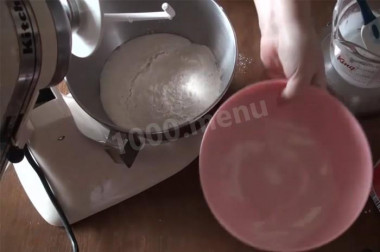
Add the sifted flour.
Step 10:
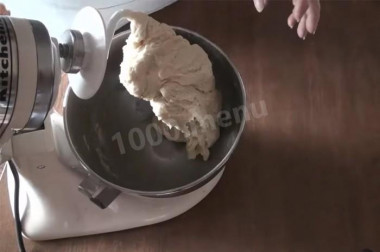
Knead the dough.
Step 11:
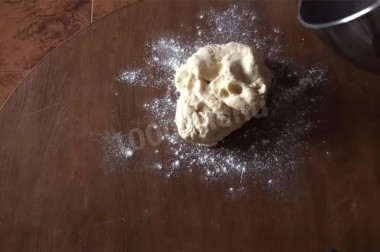
Knead the dough a little on the table until smooth.
Step 12:
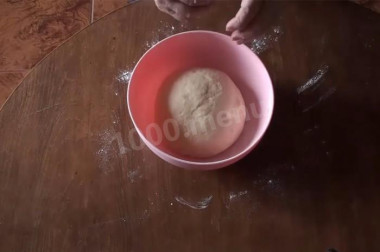
Put the dough in a bowl and leave to stand for 10-20 minutes. No need to wait for it to fit.
Step 13:
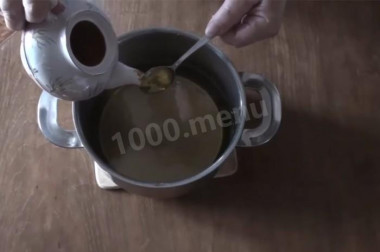
Add saffron water from the teapot to the finished warm syrup (sorbet) (2-3 teaspoons of such water per cup of syrup). Stir and let it cool completely.
Step 14:
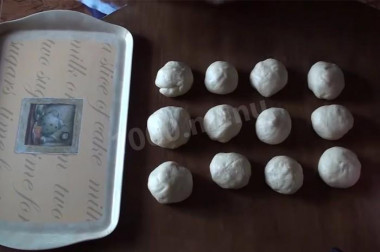
Divide the dough into 14 parts, and then connect four of them in pairs. You will get 10 small koloboks and 2 large ones. Large — for the upper and lower layers.
Step 15:

Lubricate the mold (baking sheet, frying pan) for baklava with butter (you can use margarine, but not vegetable oil).
Step 16:

Roll out a large bun according to the size of the mold. This recipe is designed for a round shape with a diameter of 24-26 cm .
Step 17:

Transfer the rolled layer to the mold and straighten the edges.
Step 18:

Lightly brush the dough with butter (which you have previously melted and cooled, 200 grams).
Step 19:
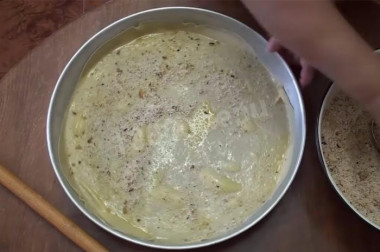
Sprinkle the dough with a little filling of nuts with sugar. The bottom layer is not heavily sprinkled and lubricated, so that if the dough breaks, the filling does not leak out and the baklava does not burn.
Step 20:

Now, in turn, roll out all the small koloboks according to the size of the mold.
Step 21:
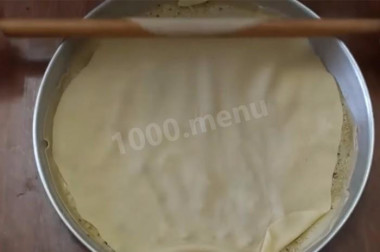
Transfer to the mold, stretch to the edges, press against the lower layers.
Step 22:

Brush with oil.
Step 23:
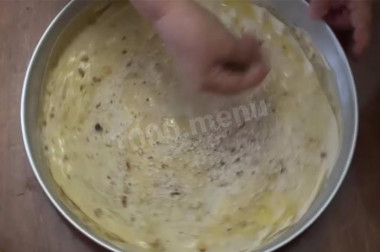
Sprinkle generously with nut filling. Distribute the filling equally between all layers of baklava.
Step 24:
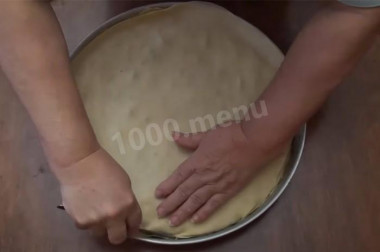
Make the top layer from the second large bun. Roll out with a margin, cover the baklava, fill the edges nicely at the rim. The top layer does not need to be lubricated (yet).
Step 25:
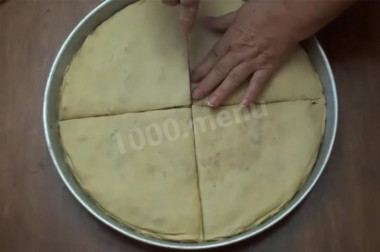
Cut the baklava first into 4 parts, then into 8.
Step 26:

Then cut each piece separately, making cuts as in the photo, parallel to the cuts. So the same rhombuses are obtained.
Step 27:
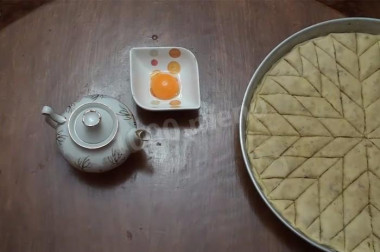
For a beautiful crust, add 1-2 tablespoons of saffron water from the teapot to the egg yolk and mix well. If there are lumps of yolk left, they will burn on baklava, it will be ugly.
Step 28:
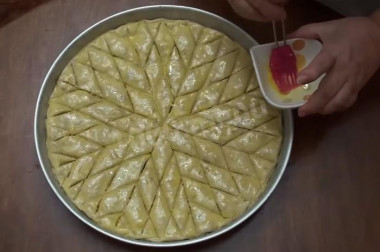
Smear baklava with egg yolk and saffron.
Step 29:
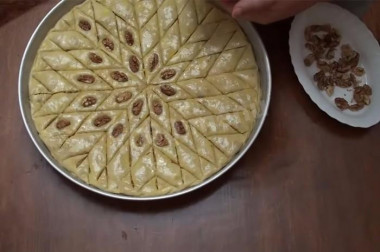
Put a nut on each diamond and press it down a little.
Step 30:
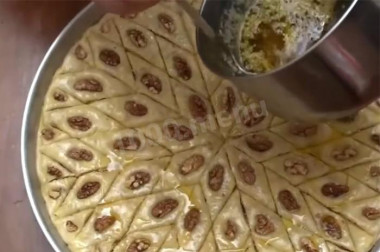
Now fill the baklava with the remaining 100 grams of butter. Spread the butter well over the baklava, tilting the mold, as when pouring pancakes into a frying pan.
Step 31:
Put the baklava in a preheated oven and cook at 180 degrees for 40-45 minutes until golden brown. Cut the hot baklava along the lines, pour cold syrup (sorbet) and let it brew.
Step 32:
You can celebrate, try and treat. Bon appetit!
Butter can be melted in the microwave or in a water bath.
How to melt butter in the microwave?
Cut the butter into small pieces and place it in a special container. To prevent the oil from splashing when heated, cover the oil vessel with a paper towel. The oil should be melted either at the lowest power or in defrosting mode. At first, five seconds will be enough. Next, if the butter has not melted yet, set it again for 5 seconds and start the microwave. Repeat the process several times until the desired result.
How to melt butter in a water bath?
You will need two containers of different diameters. Pour water into a large one and put it on the stove. Place the smaller container on top so that it is submerged in water by about half. Put the sliced butter into it. Under the influence of boiling water, the oil will begin to melt. Stir the oil slightly to speed up the process. As soon as the pieces of oil are completely dissolved, remove the container from the stove.
Keep in mind that everyone's ovens are different. The temperature and cooking time may differ from those specified in the recipe. To make any baked dish successful, use useful information about the features of ovens !
The liquid in which yeast is bred should be pleasant to the touch, no higher than 40 degrees. Why is this important? In a warm environment, yeast is well activated, in a hot one it will die, and in a cold one it simply will not work. To avoid unpleasant surprises, check the yeast before mixing with the rest of the ingredients. Pour a little warm milk into a bowl, stir in the yeast. Cover the bowl with a kitchen towel and put it in a warm place without drafts for 10-15 minutes. During this time, a foam yeast cap should appear on the surface of the sponge. If this did not happen, then the fermentation process has not started (the yeast is overdue or spoiled). In this case, it is worth taking other yeast, otherwise baking will not work.
Caloric content of the products possible in the composition of the dish
- Whole cow's milk - 68 kcal/100g
- Milk 3.5% fat content - 64 kcal/100g
- Milk 3.2% fat content - 60 kcal/100g
- Milk 1.5% fat content - 47 kcal/100g
- Concentrated milk 7.5% fat content - 140 kcal/100g
- Milk 2.5% fat content - 54 kcal/100g
- Walnuts - 650 kcal/100g
- Black Walnut English Walnut - 628 kcal/100g
- Black Persian Walnut - 651 kcal/100g
- Walnut oil - 925 kcal/100g
- Saffron - 310 kcal/100g
- Granulated sugar - 398 kcal/100g
- Sugar - 398 kcal/100g
- Butter 82% - 734 kcal/100g
- Amateur unsalted butter - 709 kcal/100g
- Unsalted peasant butter - 661 kcal/100g
- Peasant salted butter - 652 kcal/100g
- Melted butter - 869 kcal/100g
- Salt - 0 kcal/100g
- Water - 0 kcal/100g
- Wheat flour - 325 kcal/100g
- Egg yolks - 352 kcal/100g
- Dry yeast - 410 kcal/100g

